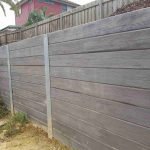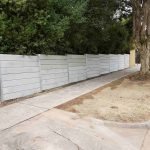Introduction
Retaining walls are important structures in landscaping and building and construction, providing stability and avoiding soil erosion. When built properly, they can boost the visual appeal of a home while providing functional support to the terrain. However, lots of contractors-- both knowledgeable and beginner-- make typical mistakes during the setup procedure that can result in significant problems down the line. In this thorough article, we'll look into these risks, discussing how specialists can avoid them and guaranteeing that their tasks not only meet however exceed customer expectations.
Common Mistakes Retaining Wall Professionals Avoid
Understanding Retaining Walls
What is a Retaining Wall?
A retaining wall is a structure designed to keep back soil or rock from a building, structure, or location. Made from numerous products-- including timber sleeper, concrete sleeper, and H beam-- these walls serve both practical and visual functions in landscaping projects.
The Significance of Proper Design
Proper design is crucial for any retaining wall project. A properly designed wall makes sure stability and durability, avoiding pricey repairs or replacements. Neglecting this element can cause structural failures.

1. Stopping working to Conduct a Site Assessment
Why Is a Site Evaluation Necessary?
Before starting any construction task, it's vital to conduct a comprehensive website assessment. This includes assessing the soil type, drainage patterns, and existing vegetation.
- Soil Type: Different soils have varying load-bearing capacities. Drainage Patterns: Improperly managed water overflow can undermine even the sturdiest walls. Vegetation: Particular plants can add to soil instability.
How Can Specialists Prevent This Mistake?
Contractors must always perform geotechnical examinations before developing their keeping walls. Engaging specialists for this task might appear like an additional expenditure, however it can conserve money in the long run by avoiding catastrophic failures.

2. Neglecting Regional Structure Codes
What Are Regional Building Codes?
Local building regulations determine how structures should be integrated in specific locations, consisting of requirements for keeping walls based upon height, products used (such as timber sleeper or concrete sleeper), and drain systems.
Consequences of Non-Compliance
Ignoring these policies can result in fines and even necessary demolition of poorly built walls.
Ways to Stay Compliant
Contractors must acquaint themselves with local codes and regulations before starting any task. Consulting with regional authorities or working with a professional can make sure compliance.
3. Poor Material Selection
Choosing the Right Materials
Material choice plays an essential role in the success of a retaining wall. Alternatives like timber sleeper provide natural aesthetic appeals but may not offer the exact same sturdiness as concrete sleepers or H beams under specific https://tuffstuffretainingwalls.com.au/ conditions.
- Timber Sleeper: Great for visual appeal however vulnerable to rot. Concrete Sleeper: Highly long lasting; ideal for heavy loads. H Beam: Deals extraordinary strength for larger structures.
Tips for Material Selection
Contractors ought to assess environmental aspects when picking materials:
Load Requirements: Consider what weight the wall will need to support. Climate Conditions: Select materials that hold up against regional weather condition patterns effectively. Aesthetic Preferences: Match material options with clients' visual choices while ensuring functionality.4. Disregarding Drainage Solutions
Why Is Drain Important?
Proper drainage avoids water from collecting behind the wall-- a leading reason for failure in keeping walls due to hydrostatic pressure building up over time.
Effective Drainage Techniques
Implementing correct drain services can substantially extend the life expectancy of a retaining wall:
Weep Holes: Enable water to escape through small openings. Drainage Pipes: Set up at the base to redirect water away from the wall. Backfill Materials: Use gravel or other permeable materials behind the wall to promote drainage.5. Insufficient Backfill Compaction
What Is Backfilling?
Backfilling includes positioning soil behind a retaining wall after it has actually been developed, which helps support it against lateral pressures.
Risks of Poor Compaction
If backfill isn't compacted appropriately:
- The wall might settle unevenly over time. Soil motion might compromise structural integrity.
Best Practices for Backfill Compaction
Use mechanical compactors for consistent results. Layer backfill soil in workable areas rather of discarding big quantities at once. Monitor wetness levels; excessively wet soil will not compact as effectively.6. Overlooking Structural Reinforcements
The Function of Reinforcements
Structural supports are essential in ensuring that your maintaining walls can withstand lateral forces triggered by soil pressure and water accumulation.
Methods of Reinforcement
Incorporating reinforcements such as:
- Steel rods Geogrid systems Concrete footings
These elements add strength where it's most needed.
7. Incorrect Height Estimation
Why Height Matters?
The height of a retaining wall straight affects its design requirements and product requirements; for that reason, miscalculating height might lead to structural weaknesses.
How To Get It Right?
Measure precisely and think about both noticeable heights above ground and concealed depths below ground when planning your project.
8. Not Accounting for Soil Pressure
What Is Soil Pressure?
Soil pressure refers to the force exerted by soil on structures such as maintaining walls due to gravity and other forces acting upon it (like rainwater).
Calculating Soil Pressure Correctly
Utilize tools such as:
Soil mechanics software Consulting civil engineering expertsThese resources assist precisely forecast just how much pressure your retaining wall will withstand over time.
FAQs About Common Mistakes Retaining Wall Professionals Avoid
1: What are common errors made by professionals throughout construction?
Typical mistakes include stopping working to conduct appropriate website assessments, disregarding regional building codes, choosing insufficient materials, neglecting drain services, insufficient backfill compaction, neglecting structural reinforcements, inaccurate height evaluations, and not accounting for soil pressure.
2: How crucial is proper drainage?
Proper drainage is important since built up water boosts hydrostatic pressure behind a wall that might result in its failure in time if not resolved effectively through weep holes or other methods.
3: Can I use timber sleeper for my whole wall?
While timber sleeper uses aesthetic appeal appropriate for specific styles; using it alone may compromise sturdiness compared with concrete sleepers or H beams under certain environmental conditions like heavy rainfall or high wind regions where more robust alternatives would be advisable.
4: Why need to I hire specialists rather of doing it myself?
Working with experts brings expertise that decreases errors connected to code compliance while ensuring quality product choice based on site-specific requirements-- conserving you cash on future repairs!
5: What happens if I do not follow local structure codes?
Failure to adhere might result in fines imposed by local authorities-- or even worse-- mandated demolition requiring costly rework due right away following evaluation processes exposing non-compliance concerns after building and construction completion!
6: How often should I inspect my maintaining walls?
Regular examinations every season help catch minor issues before they intensify into major issues; preferably focus on checking them a minimum of twice yearly together with post-storm assessments after heavy rains events threatening their stability!
Conclusion
Understanding Common Mistakes Retaining Wall Specialists Avoid is basic for anyone seeking to develop reputable structures that stand up against nature's difficulties while adding charm around residential or commercial properties! From carrying out thorough site evaluations through proper product selections down through continuous maintenance plans-- having awareness about each action paves way toward effective results guaranteeing satisfied clients who appreciate professionalism exhibited throughout tasks carried out successfully! By avoiding typical mistakes gone over herein-- the journey becomes smoother yielding pleasing outcomes well worth efforts invested!

This extensive guide describes vital aspects every specialist should grasp when dealing with maintaining walls while illuminating frequent bad moves made along method-- forging paths leading toward quality within realm construction!